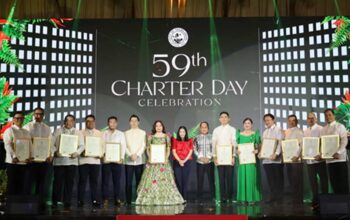BOHOL has been designated as one of the new 18 new Global Geoparks and only one in the Philippines by the United Nations Educational, Scientific and Cultural Organization (UNESCO).
This came during the 216th UNESCO Executive Board Session held in Paris, France, on May 24, 2023.
“UNESCO’s Executive Board has endorsed the addition of 18 sites to the UNESCO Global Geoparks network. This brings the total number of geoparks to 195 in 48 countries. Two UNESCO member states join the network: New Zealand and the Philippines,” according to is website.
The new geoparks are: Caçapava and Quarta Colônia in Brazil; Lavreotiki, Greece; Ijen, Maros Pangkep, Merangin Jambi and Raja Ampat, Indonesia; Aras and Tabas, Iran; Hakusan Tedorigawa, Japan; Kinabalu, Malaysia; Waitaki Whitestone, New Zealand; Sunnhordland, Norway; Bohol Island, Philippines; Jeonbuk West Coast, Republic of Korea; Cabo Ortegal, Spain; Khorat, Thailand; and Mourne Gullion Strangford, United Kingdom of Great Britain and Northern Ireland.
UNESCO cited Bohol’s world known Chocolate Hills comprising of some 1,776 coned hills spread out in the towns of Carmen, Batuan, Sagbayan and other nearby towns. It also named the Danajon Double Barrier Reefs situated in the northernmost part of Bohol, said to be the only in Asia and one of the documented six barrier reefs in the world.
Chocolate Hills are protected under the expanded National Integrated Protected Areas System or NIPAS Act (Republic Act No. 11038 of 2018 signed by then President Rodrigo Roa Duterte.
Governor Aris Aumentado’s administration reactivated the Danajon Double Barrier Reefs Development Council with the auspices of the other agencies, such the Department of Environment and Natural Resources (DENR) with the end in view to protect and develop the reefs for food security in fish catch.
Aumentado, in media interview on Saturday, expressed elation over Bohol’s feat in the prestigious Global Geopark list, adding that all efforts under his watch paid off.
He is thankful to those who labored hard, like agencies, private sector, including the past administrations that also contributed to the successful hurdle of Bohol to be designated as one of the UNESCO Global Geoparks.
Aumentado hopes that with the designation of Bohol as Global Geopark its geographical lands as sustainable and environmentally-conscious tourism play a key role in the furtherance of protection and sustainable efforts.
He said that such designation could boost the economy here, particularly tourism, as this could be an added ticket to be known internationally.
As this developed, he urged all tourism-loving Boholanos to go around to see for themselves the natural wonders endowed for Bohol.
Earlier on, British ambassador to the Philippines Laure Beaufils, who visited Bohol, said that Bohol’s nomination to the world heritage is a “powerful, fantastic choice.” She said that it will make it a boost as tourist destination. The nomination as a geopark, if okayed by UNESCO, is like a tourist accreditation.
UNESCO Global Geoparks are single, unified geographical areas where sites and landscapes of international geological significance are managed with a holistic concept of protection, education and sustainable development. A UNESCO Global Geopark uses its geological heritage, in connection with all other aspects of the area’s natural and cultural heritage, to enhance awareness and understanding of key issues facing society, such as using our earth’s resources sustainably, mitigating the effects of climate change and reducing natural hazard-related risks.
The purpose of geoparks, UNESCO said is that “By raising awareness of the importance of the area’s geological heritage in history and society today, UNESCO Global Geoparks give local people a sense of pride in their region and strengthen their identification with the area. The creation of innovative local enterprises, new jobs and high-quality training courses is stimulated as new sources of revenue are generated through geotourism, while the geological resources of the area are protected. (rvo)



